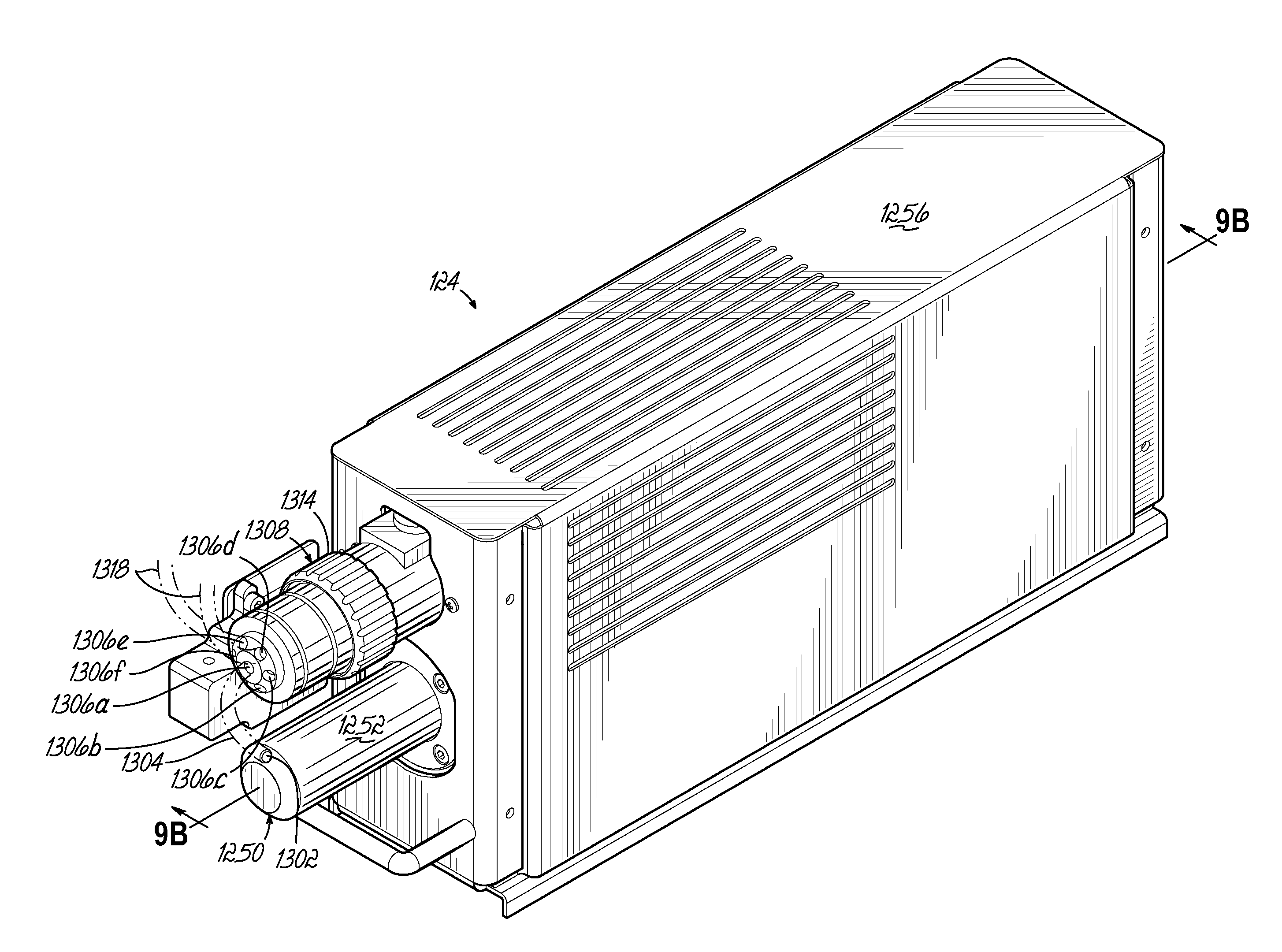Automated system for sample preparation and analysis
a sample preparation and analysis technology, applied in the field of sample preparation systems and sample analysis systems, can solve the problems of sophisticated lcms specialist technologists, and not being well suited to the typical hospital clinical lab or medical lab technician. , to achieve the effect of significantly increasing the “time to result” for each specimen
- Summary
- Abstract
- Description
- Claims
- Application Information
AI Technical Summary
Benefits of technology
Problems solved by technology
Method used
Image
Examples
example 1
[0332]Turning now to FIG. 39A, five chromatograms 1200, 1202, 1204, 1206, 1208 corresponding to each of five analytes contained within a second sample are schematically shown as would be detected on a LC-MS system. A chromatogram is a graphical representation of the time dependent total ion count (“TIC”) for each analyte of interest measured at the ion detector 150 (FIG. 4B). Accordingly, the chromatogram includes retention time along the x-axis, TIC along the y-axis, and m / z along the z-axis. In the particular example, the first, second, and third chromatograms 1200, 1202, 1204 correspond to first, second, and third analytes that elute substantially simultaneously off of the columns 114, 116 (FIG. 7A) during a first elution window. The fourth and fifth chromatograms 1206, 1208 correspond to fourth and fifth analytes, respectively, which elute at later times (second and third elution windows, respectively).
[0333]The LC-MS system is capable of scanning at a rate that ranges from 2000...
example 2
[0338]FIG. 40 illustrates TIC for all m / z values measured, in toto, at the ion detector 150 (FIG. 4B) of the mass spectrometer 120 (FIG. 4B) for a plurality of prepared samples, ad infinitum, where the prepared samples undergo a multiplexing protocol and are scheduled as described in detail previously. The peaks represent one or more gas phase ions corresponding to one or more analytes eluting off of the columns 114, 116 (FIG. 7A). In this way, and as clearly demonstrated in this figure, the resources of the mass spectrometer 120 (FIG. 4B) are maximized as compared to conventional methodologies where one sample must completely elute from a column 114, 116 (FIG. 7A) and be analyzed before a second sample may be injected into the column 114, 116 (FIG. 7A) for analysis.
[0339]As also shown in FIG. 40, each time a new sample is injected into the columns 114, 116 (FIG. 7A), a signal may be generated to indicate a zeroing of the retention time window and the start of a new analysis. The si...
PUM
 Login to View More
Login to View More Abstract
Description
Claims
Application Information
 Login to View More
Login to View More - R&D
- Intellectual Property
- Life Sciences
- Materials
- Tech Scout
- Unparalleled Data Quality
- Higher Quality Content
- 60% Fewer Hallucinations
Browse by: Latest US Patents, China's latest patents, Technical Efficacy Thesaurus, Application Domain, Technology Topic, Popular Technical Reports.
© 2025 PatSnap. All rights reserved.Legal|Privacy policy|Modern Slavery Act Transparency Statement|Sitemap|About US| Contact US: help@patsnap.com



